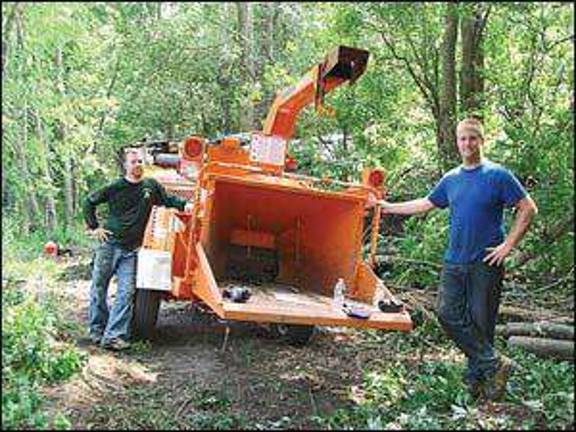Trees will be cut to control Wallkill flooding

Warwick among four riverside towns tasked with keeping channel clear WARWICK About a thousand trees will soon be removed from the banks of the Wallkill River in an effort to control flooding. The Orange County Soil and Water Conservation District Manager Kevin Sumner said trees will be removed from the stretch of riverbank extending from below Pellet’s Island Bridge to the Route 17M Bridge. The cutting and snagging will allow water to flow freely, which will protect farmers’ fields during flood conditions. The New York State Department of Environmental Conservation selected for removal only trees on the lower bank and bench area. Most of the trees to be cut are maple trees. Maples once cut down tend to re-grow in clusters, creating a “picket fence” that collects debris and holds up water flow during flooding. Thinning the trees allows water to pass through. By pre-selecting the trees and limiting their number, the state conservation department ensured that a canopy of overhead limbs and leaves remain along the river’s edge as a foraging area for Indiana bats, which is on the federal and state endangered species list (please see related article). The bats have a roosting area nearby. Forty-percent of the trees can be cut. Vellenga’s Lawn Care is doing the cutting. Owner Chris Vellenga, who is working with Brandt Hoffman, said cutting the trees, most of them maples, will take about 20 days. The average tree size is between eight and 12 inches around, and they’ll be chipped for use as covering on the watershed’s upper bank. Larger trees will be held for firewood. Selected trees along 4,000 feet of river side or just under one mile are being cut. No work is being done on the Orange County Landfill side of the river. “Tree maintenance hasn’t been done since the mid-80s, so there’s about 25 years of growth blocking the river,” said county Legislator Tom Pahucki. As chair of the county’s Soil and Water Commission, he was the driving force behind this project. The county executive intervenes Delaying the work for a year was a difference of opinion between Pahucki and the Goshen Town Board. Town code calls for an engineer’s scrutiny and a permit, notably because the landfill labeled a hazardous waste site abuts the area in question, the board said. But Pahucki argued that this isn’t a flood plain project but a flood control project that doesn’t fall under the statues of the law. Some officials expressed concern that the project would weaken the landfill or increase the velocity of the water’s flow. Sumner said the project doesn’t increase flooding but decreases it. Clearing trees reduces velocity, he said, so that the same amount of water can flow at a lower velocity. Sumner said the Orange County Soil and Water Conservation District has the environment in mind and only endorses projects that support conservation. Funds were allocated for the project after County Executive Edward Diana, working with the state conservation department, intervened. “There were so many partners in this project, at times I thought it would never happen,” said Pahucki. Once the project is completed, the next step is to create a maintenance agreement with the towns along the river to be responsible for tree cutting. Taking responsibility with Orange County for maintenance is Goshen, Wawayanda, Warwick and Minisink. Tree maintenance hasn’t been done since the mid-80s, so there’s about 25 years of growth blocking the river.” Orange County Legislator Tom Pahucki About the Indiana bat The Indiana bat is one of nine bat species found in New York. Generally, it is uniformly dark grey to grayish-brown and often has a pinkish nose. They feed solely on flying insects and presumably males spend the summer preparing for the breeding season and winter that follows. Females congregate in nursery colonies, only a handful of which have ever been discovered. These were located along the banks of streams or lakes in forested habitat, under the loose bark of dead trees. A single young is born to each female, probably late in June. In terms of sheer numbers, the species is rather abundant. However, 85 percent of these bats winter in only seven caves or mines, with nearly one-half of the world’s population found in only two caves. Even though other populations have been discovered in recent years, the additions have not offset the losses recorded over the full extent of the bat’s range. In New York, approximately 13,000 Indiana bats are known to exist in 8 of the 120 sites searched to date. Surveys conducted since the early 1980s suggest they are doing fine in New York and may in fact be increasing. The most serious problem for hibernating bats is believed to be disturbance by people exploring caves. Bats are sensitive to noise and light. Each time they are awakened, precious energy reserves stored as fat are depleted. Too many disturbances, and the animals will not survive until spring. Pesticide poisoning is also believed to be contributing to the decline of some North American bat species. Source:: New York State Department of Environmental Conservation